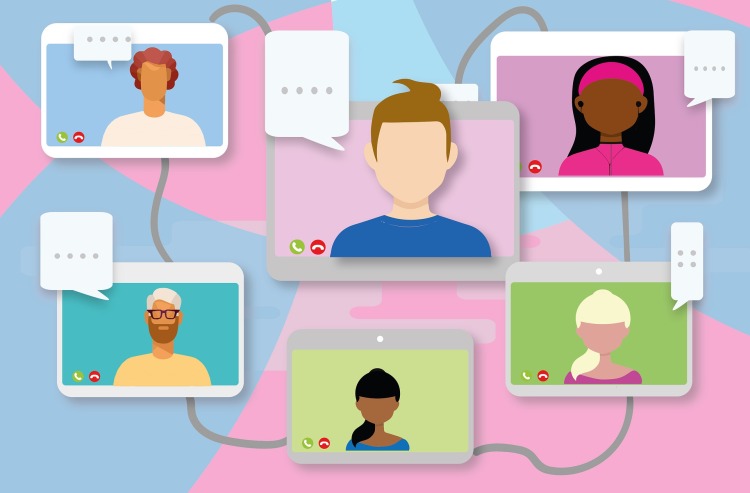
When I began the ADL program, I never imagined that I would genuinely need to plan for an organizational change. In the past, I have only seen myself as one of the people change happens to, but not one that creates change. I began the program as an advisor who cared about improving each learner’s experience. I developed my innovation plan with myself in mind and thought maybe some advisors would buy in and want to join in my innovation idea, but I never imagined I would be leading a change effort. However, while working to create a significant learning environment, I was charged with verbalizing the biggest, most audacious goal I could imagine from a pie-in-the-sky dream worldview concerning my innovation idea.
To revolutionize advising for all university programs …
The Advisor That Cares, Questions for Formulating Significant Learning Goals
It seems that from the moment I released that into the universe, an opportunity has arisen that I honestly may have never pursued before beginning this program. As a result of the learning and reflection work performed in the ADL program, I was fully equipped to share my vision for advising. I entered an interview situation fully armed with answers for action to make that vision a reality. This program and precisely this very timely course are preparing me for this transition into leadership. I am now privileged to work with a team of caring advisors who support and guide students from onboarding through the first two years of their academic pursuits at the university.
An idea that began with one advisor can now grow, evolve, and benefit an entire team of advisors. Aspirations that began from a desire to provide learners with information in various formats to fit the diverse learning preferences of our digitally connected world now expand to find ownership and implementation success with a team of advising experts. The proposed change strategies will create space for advisors to express themselves while developing more meaningful interactions that assist learners in processing and making sense of their educational journey. As advisors evaluate their personal why statements to discover their purpose and lead with their hearts while exercising proven methods of engaging every influence available to engage in the crucial conversations needed to execute this innovation to advising.
Influencer Strategy

Influencer teaches that to change behavior, first isolate the vital behaviors that lead to those changes. Then, identify one or two key behaviors that will make an overarching impact on almost everything targeted for the results sought.
In this case, the targeted behavior is the creation of personalized advising ePortfolios (eP). The strategy explains the six sources of influence and how we can target aspects of personal, social, and structural motivation and ability in our change efforts. For example, this strategy helps us recognize that it might be something other than that a person is personally unmotivated. However, they may need more abilities to enact the changes asked of them. As we work to address at least four of the six sources of influence at any given time, we increase the chance for success exponentially.
4 Disciplines of Execution
Like in the Influencer Strategy, the first discipline of 4DX encourages focus toward one big goal.

Similar to the vital behaviors identified by Influencer, the second discipline of 4DX focuses on lead measures to move toward the targeted goals. Finally, the third and fourth disciplines, like Influencer, utilize social motivation and social ability to increase accountability. The 4DX approach increases engagement through a compelling scoreboard and regular WIG sessions.
Crucial Conversations

Crucial Conversations could not have come at a more opportune time. As I transition into a leadership role, I face team-building and communication opportunities due to the sheer nature of a complete change in leadership for the unit.
I want to help build a strong foundation of dialog to grow this innovative idea into something that can revolutionize advising at the institution. Crucial conversations will provide for fruitful collaboration as the team grows to trust one another; we will influence each other to strive for the best version of ourselves, expressions of our purpose, and the most effective resource to serve a variety of learners.
The combination of all the strategies and tools I am developing throughout this Leading Organizational Change course is valuable to the success of this innovation. I am continuing a personal evolution to become a strong, confident, and humble self-differentiated leader so that I can stand firm in the commitment to the execution of plans developed by the team. Results from the crucial conversations the team and I hold will be a pivotal skill to return to repeatedly as we explore and improve the innovation to advising. Through the Influence Strategy developed and the 4 Disciplines of Execution, I am confident that we will meet and exceed our goal of improving each learner’s experience.
References
Grenny, J., Patterson, K., Maxfield, D., McMillan, R., & Switzler, A. (2013). Influencer: The new science of leading change. New York, NY: McGraw-Hill.
McChesney, C., Covey, S., & Huling, J. (2012). The 4 Disciplines of Execution: Achieving Your Wildly Important Goals (1st ed.). Free Press.
Patterson, K., Grenny, J., McMillan, R., & Switzler, A. (2012). Crucial conversations: Tools for talking when stakes are high (2nd ed.). McGraw Hill.
